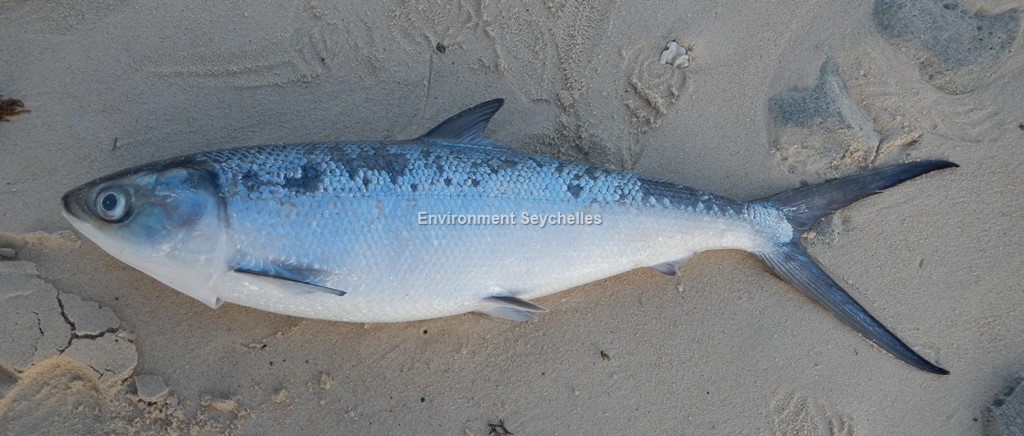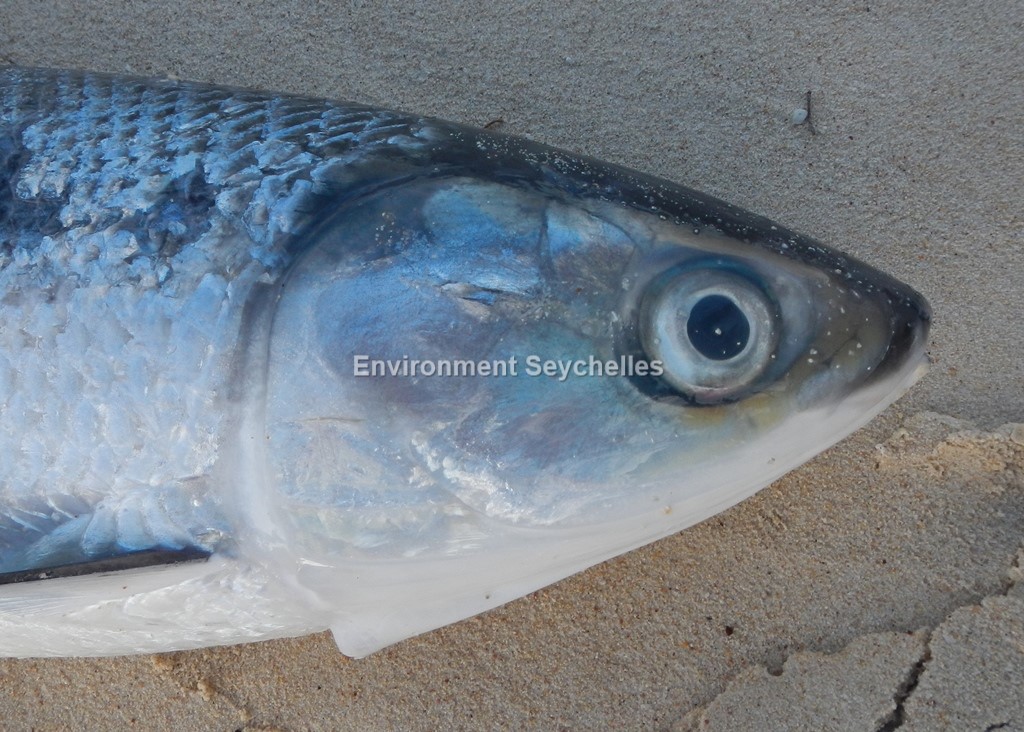Description:
Dorsal spines: 2; Dorsal rays: 13-17; Anal spines: 2; Anal rays: 8-10.
Body elongate and moderately compressed. Small terminal mouth without teeth. Eye covered by thick transparent adipose tissue. Small cycloid scales make body smooth to the
touch. Single, short based dorsal fin situated mid body. Anal fin short-based, positioned far back on body. Pectoral fins falcate. Caudal fin large and deeply forked.
Colour. Olive green dorsally with silvery flanks. Dorsal, anal and caudal fins with dark margins.
Size:
Maturity: Lm and Range vary widely with location. Max Length: 180cm SL. Commonly to 100cm SL.
Habitat and Ecology:
Inhabits offshore marine waters and coastal bays (depth 1-30m, usually only to 15m), also known to enter estuaries. Adults occur in small to large schools near the coasts
or around islands where reefs are well developed. Eggs and larvae are pelagic for two to three weeks. Spawning occurs not more than 30km from shore. Older larvae migrate
inshore to settle in coastal wetlands (mangroves and estuaries). Sub-adults return to sea to mature. Larvae eat zooplankton. Juveniles and adults eat cyanobacteria, soft
algae, small benthic invertebrates, and pelagic fish eggs and larvae.
Fishery Status:
This species is not protected or subject to fishery regulations. It is bycatch in the net fishery, but is a relatively uncommon component of the catch. It is considered a
poor quality fish on the local market.
Notes:
References:
Bray, D.J. Chanos chanos in Fishes of Australia. http://fishesofaustralia.net.au/home/species/1854 (18/06/19).
Fischer, W. & G. Bianchi (eds), (1984). FAO species identification sheets for fishery purposes. Western Indian Ocean; (Fishing Area 51). Prepared and printed with the
support of the Danish International Development Agency (DANIDA). Rome, Food and Agricultural Organization of the United Nations, vols 1-6.
Freyhof, J. et al. (2017). Chanos chanos. The IUCN Red List 2017: http://dx.doi.org/10.2305/IUCN.UK.2017-3.RLTS.T60324A3098466.en. (18/06/19).
Froese, R. & D. Pauly. (Eds.) (2019). FishBase. https://fishbase.org/summary/80 (18/06/19).
Citation:
Nevill, J.E.G. (2019). Chanos chanos, Milkfish. Seychelles Seatizens. www.seatizens.sc. https://seatizens.sc/species/chanos-chanos-forsskal-1775/ (edited 01/07/22).



Looking forward to reading more. Great article. Great.
Enjoyed every bit of your blog post.Really looking forward to read more. Great.
Thanks a lot for the article post.Really looking forward to read more. Want more.
Very neat blog article.Much thanks again. Really Great.
Thanks for the blog.Really thank you! Will read on…
Really enjoyed this blog article.Much thanks again. Great.
Enjoyed every bit of your post.Much thanks again. Want more.
Wow, great blog post.Much thanks again. Cool.
Major thankies for the post.Really looking forward to read more. Great.
Great, thanks for sharing this article. Really Cool.
I value the article.Thanks Again. Much obliged.